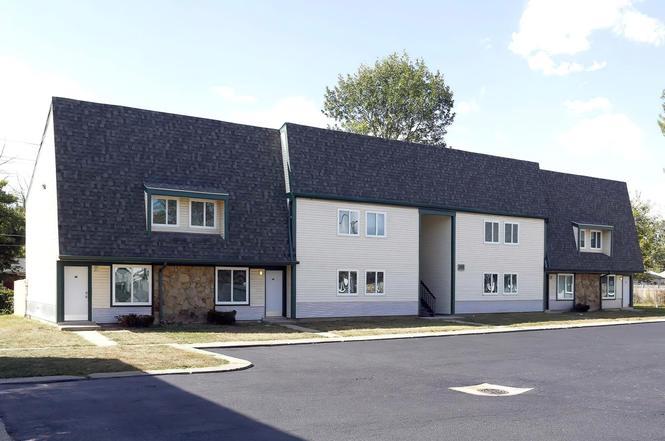Flooding is one of the most pressing natural hazards that can impact communities, and understanding local flood risk is essential for residents, planners, and policymakers alike. In this article, we take a close look at flood risk in the 46224 zip code of Indianapolis, a region with unique geographical and infrastructural factors that influence its vulnerability. By examining historical data, mapping flood-prone areas, and considering recent climate trends, we aim to provide clear and actionable insights to help protect lives and property. Whether you live, work, or invest in this part of Indianapolis, gaining a thorough understanding of flood risk is a critical step toward resilience and informed decision-making.
Table of Contents
- Understanding the Flood Risk Landscape in 46224 Indianapolis
- Analyzing Historical Flood Data and Weather Patterns
- Infrastructure Vulnerabilities and Community Preparedness
- Effective Strategies to Mitigate Flood Impact in 46224
- Insights and Conclusions
Understanding the Flood Risk Landscape in 46224 Indianapolis
46224 Indianapolis is characterized by a complex interplay of urban development and natural waterways, making flood risk assessment a critical part of community planning. The area experiences moderate rainfall throughout the year, with occasional heavy storms that can overwhelm local drainage systems. Key factors influencing flood risk here include the topography, soil composition, and proximity to waterways such as Fall Creek. In addition, increasing impervious surfaces from residential and commercial growth reduce soil absorption, heightening surface runoff and potential flooding events, particularly in low-lying neighborhoods.
Residents and planners should be aware of specific flood risk indicators, including:
- Stormwater management infrastructure quality, which varies across the district.
- Historical flood records, revealing patterns of water accumulation and damage.
- Local regulations on land use, aimed at minimizing flood hazards.
Understanding these dynamics is vital to developing resilient strategies that protect property and ensure community safety in the face of changing weather patterns. Continuous monitoring and public education remain essential components in mitigating flood risks in this evolving urban environment.
Analyzing Historical Flood Data and Weather Patterns
In examining the historical flood data for the 46224 area of Indianapolis, clear patterns emerge that highlight specific vulnerabilities within the region. Flood events here tend to cluster around heavy spring rains and rapid snowmelt periods, suggesting a strong hydrological response to seasonal changes. These incidents are often exacerbated by urban runoff, where impervious surfaces like roads and parking lots accelerate water flow into drainage systems. The consequences include frequent overflows in localized low-lying zones, which deserve particular attention when considering mitigation strategies.
Key insights from the weather analysis reveal:
- Increased precipitation intensity: Rainfall events are becoming more intense, posing a higher risk of flash floods.
- Changing storm patterns: There is a noted shift toward more frequent, shorter duration storms that challenge existing stormwater infrastructure.
- Seasonal shifts: Warmer winters lead to earlier snowmelt, increasing spring flood risk through sudden water surges.
Understanding these trends is crucial not only for emergency preparedness but also for long-term urban planning. By integrating floodplain mapping with real-time weather pattern tracking, city officials and residents can better anticipate and respond to flood risks in 46224, ultimately reducing both damage and disruption.
Infrastructure Vulnerabilities and Community Preparedness
Indianapolis’ 46224 area is marked by aging infrastructure that struggles to cope with increased floodwaters, amplifying the risk of property damage and community disruption. Many stormwater management systems were not designed to handle the volume of rainfall associated with recent climate shifts, leading to frequent overflows and localized flooding. The vulnerability of key transportation routes can severely impede emergency response and evacuation efforts, making resilience planning around critical infrastructure a paramount concern.
Community preparedness in this neighborhood is gradually improving but still faces challenges due to socioeconomic disparities and gaps in public awareness. Efforts to enhance readiness focus on:
- Emergency communication networks to deliver timely warnings and updates.
- Local flood mitigation projects, such as rain gardens and permeable pavement installations.
- Educational outreach programs that empower residents to develop personalized flood response plans.
Strengthening partnerships between municipal authorities, community organizations, and residents remains essential to building a more flood-resilient future for 46224 Indianapolis.
Effective Strategies to Mitigate Flood Impact in 46224
To substantially reduce the damage caused by flooding in 46224, it is essential to integrate both structural and non-structural approaches. Implementing green infrastructure such as rain gardens, permeable pavements, and urban tree canopies improves water absorption and curbs stormwater runoff. These natural solutions, combined with upgraded drainage systems tailored for heavy rainfall events, help to divert excess water away from critical residential and commercial areas. Additionally, local authorities and property owners should invest in elevating buildings and floodproofing vulnerable structures to physically mitigate water intrusion during flood events.
Community preparedness and education are equally critical. Establishing robust early warning systems and maintaining open communication channels ensure residents take timely action before floodwaters rise. Promoting flood risk awareness programs empowers families to develop customized evacuation plans and assemble emergency kits. Furthermore, encouraging participation in neighborhood resilience projects fosters collaboration, enabling swift responses and efficient resource sharing during disaster recovery efforts. Together, these multifaceted strategies form a resilient defense against the ever-present flood risks in the area.
- Green infrastructure initiatives to manage stormwater naturally
- Upgraded drainage and floodproofed structures to reduce physical impact
- Advanced early warning systems for timely alerts
- Community education and preparedness to improve individual readiness
- Collaboration through neighborhood resilience projects for faster recovery
Insights and Conclusions
In conclusion, understanding the flood risk in the 46224 area of Indianapolis is essential for residents, property owners, and local planners alike. By examining key factors such as historical flood data, topography, and infrastructure resilience, we can better prepare for potential water-related hazards and make informed decisions to protect lives and property. Staying informed, investing in proper mitigation measures, and fostering community awareness are critical steps in building a safer and more resilient neighborhood against future flood events. Flood risk assessment isn’t just about predicting the next storm—it’s about shaping a proactive approach to safeguard our community’s future.





